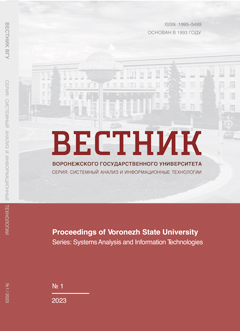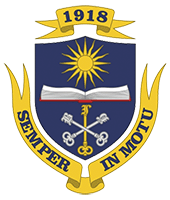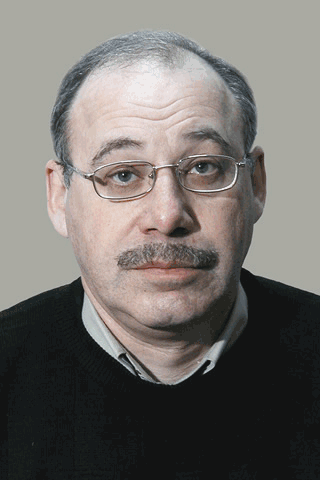Концептуальные основы обнаружения и идентификации информационно-технических объектов
Аннотация
Актуальность исследования обусловлена обеспечением требуемого уровня обнаружения информационно-технических объектов в сложных условиях радиоэлектронной обстановки, а также обеспечение их успешной идентификации. Известные способы обнаружения и идентификации не рассматривают их как n-мерные объекты, функционирующие в различных взаимосвязанных пространствах. Целью работы является определение направлений обеспечения требуемого уровня обнаружения информационно-технических объектов и их последующей идентификации с учетом особенностей их функционирования в киберпространстве. Задача решается применением средств кибернетической разведки во взаимодействии со средствами радиотехнической разведки. В статье рассмотрены перспективы обнаружения и идентификации информационно-технических объектов с учетом формирования 6-го технологического уклада в рамках создания системы всеохватывающих сенсоров, формирования смешанных (гибридных) реальностей и слияние реального и виртуального миров (реализации концепций кибер-мета-вселенных); описаны существующие и перспективные способы обнаружения (оптическое; акустическое; обнаружение по инфракрасному излучению; радиолокационное и гидроакустическое); произведена классификация методов идентификации (по способу построения математической модели, по способу изучения объекта, по способам оперативности получения модели, по виду математической модели), произведена классификация типов моделей, применяемых в системах идентификации; представлены этапы формирования модельного оператора: сбор информативных значений переменных из исследуемой среды об объекте; определение класса моделей; формирование множества моделей; задание критерия оценки; выбор наиболее подходящей модели из множества моделей; сравнение наиболее подходящей модели; определена основная последовательность действий для процедуры идентификации. Материалы статьи представляют практическую ценность для решения задачи противодействия информационно-техническим объектам при организации транспортной безопасности, кибербезопасности и охраны объектов (снижении разведдоступности, повышении разведзащищенности и обеспечении живучести) путем расширения теории пространственного поиска с учетом развития концепций кибер-мета-вселенных.
Скачивания
Литература
2. Ponkin I. V. (2022) Military analytics. Military application of artificial intelligence and numbers. Moscow : Buki Vedi. 106 p.
3. Mukhortov V. V. and Korolev I. D. (2022) The solution of the problem of detection and identification of n-dimensional information and technical objects by using cybernetic space. Information Bulletin of the Don. № 6 (90). P. 168–190.
4. Mukhortov V. V. and Nefediev Yu.V. (2020) Method of assessing the survivability of information and technical objects in relation to software and hardware impacts. Engineering Bulletin of the Don. № 4 (64). URL
5. Mukhortov V. V. and Korolev I. D. (2022) Modern scientific and methodological approaches to the detection and identification of information and technical objects, prospects for their detection and identification in the infosphere. Information systems and technologies. № 2 (130). P. 100–106.
6. Raibman N. S. (1970) What is identification? Moscow : Nauka. 118 p.
7. Mukhortov V. V. and Korolev I. D. (2022) Prospects for the development of cyber intelligence. Engineering Bulletin of the Don. 6 (90). P. 147–158.
8. Tsypkin Ya. Z. (1984) Fundamentals of the information theory of identification. Moscow : Nauka. 320 p.
9. Deich A. M. (1979) Methods of identification of dynamic objects. Moscow : “Energy”. 240 p.
10. Diligenskaya A. N. (2009) Identification of management objects. Textbook. Samara. 136 p.
11. Petukhov O. A., Morozov A. V. and Petukhova E. O. (2008) Modeling: system, simulation, analytical. St. Petersburg : “North-Western State Correspondence Technical University”. 288 p.
12. Konovalov V. I. (2010) Identification and diagnostics of systems. Tomsk : Tomsk Polytechnic University. 163 p. 13. Maksimova N. N. (2019) Mathematical modeling. Blagoveshchensk : “Amur State University”. 88 p.
- Авторы сохраняют за собой авторские права и предоставляют журналу право первой публикации работы, которая по истечении 6 месяцев после публикации автоматически лицензируется на условиях Creative Commons Attribution License , которая позволяет другим распространять данную работу с обязательным сохранением ссылок на авторов оригинальной работы и оригинальную публикацию в этом журнале.
- Авторы имеют право размещать их работу в сети Интернет (например в институтском хранилище или персональном сайте) до и во время процесса рассмотрения ее данным журналом, так как это может привести к продуктивному обсуждению и большему количеству ссылок на данную работу (См. The Effect of Open Access).



















